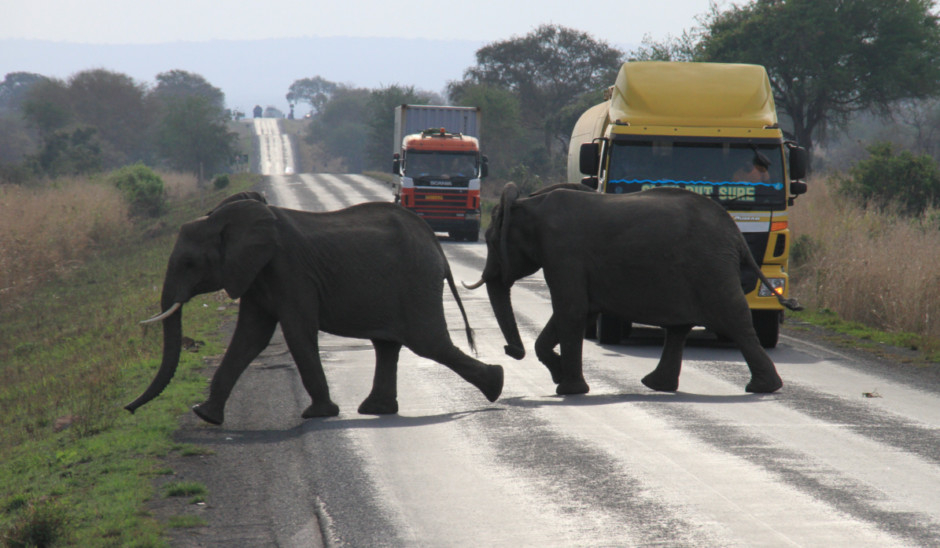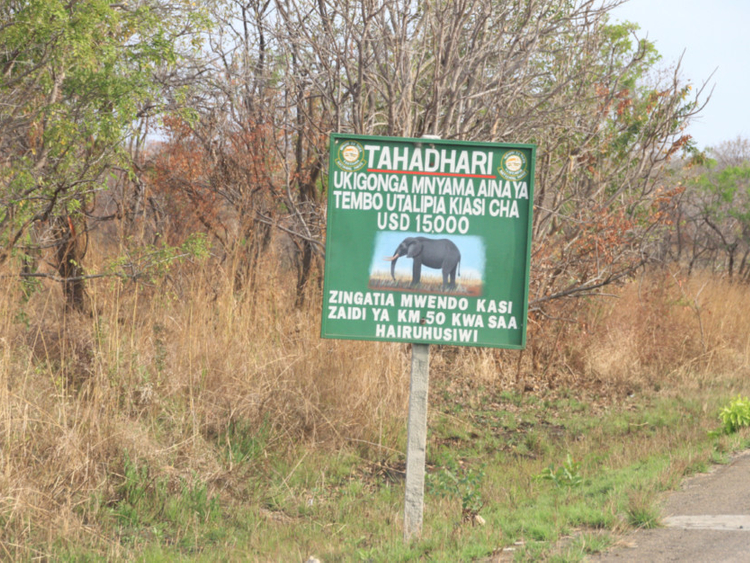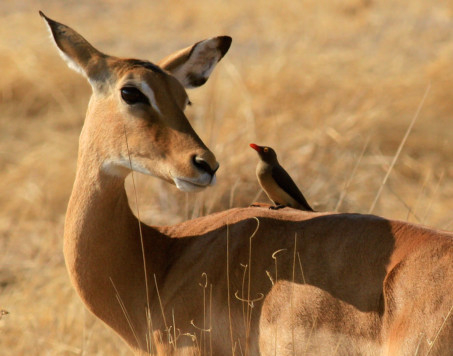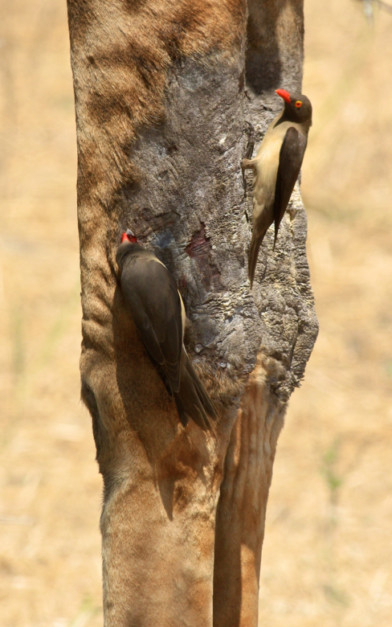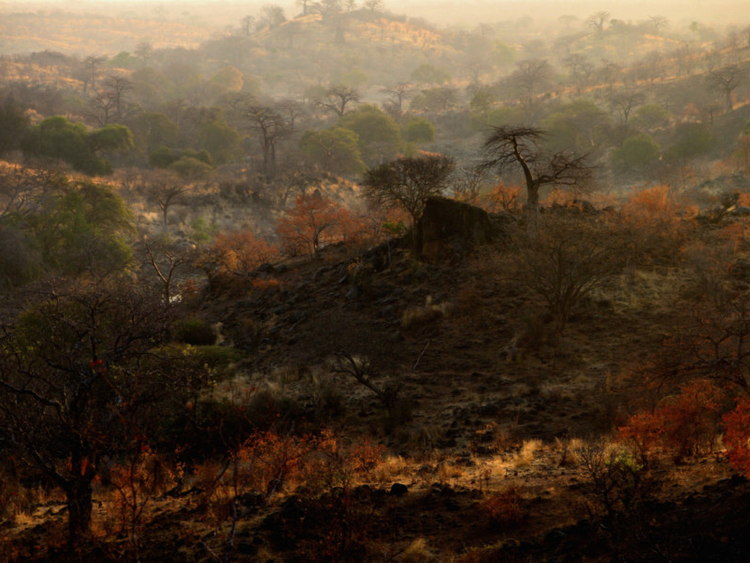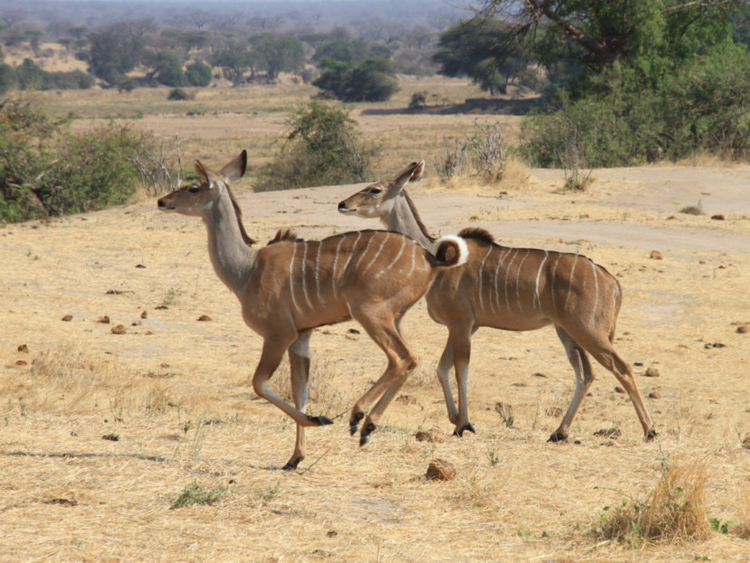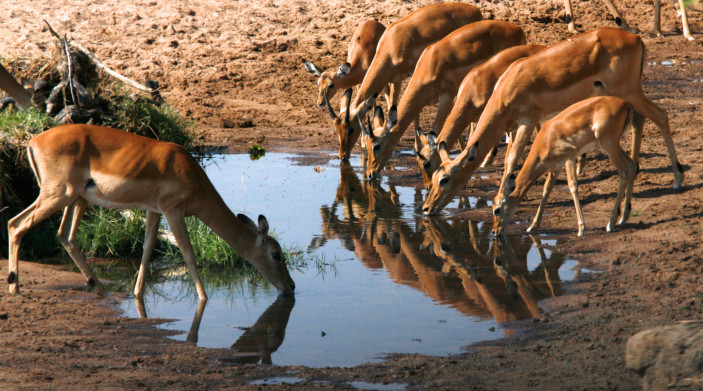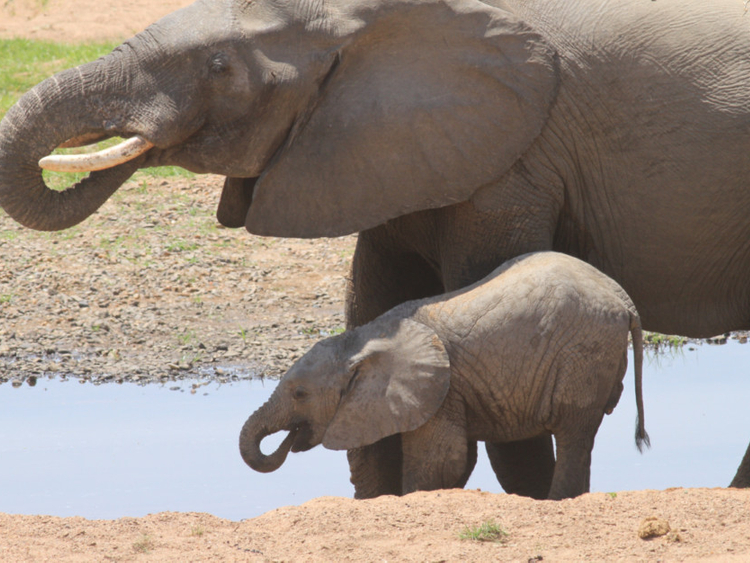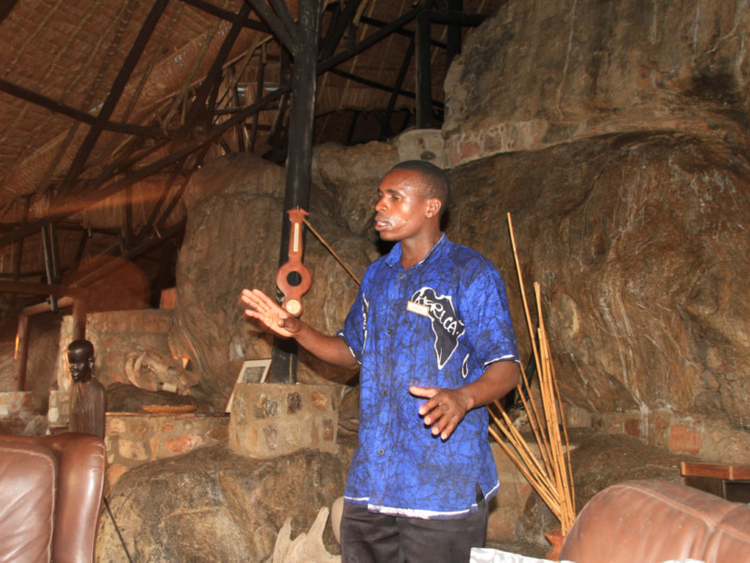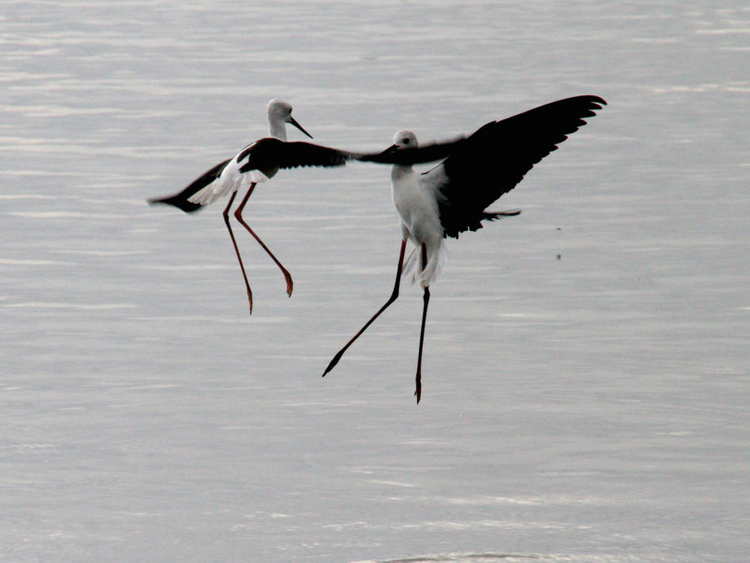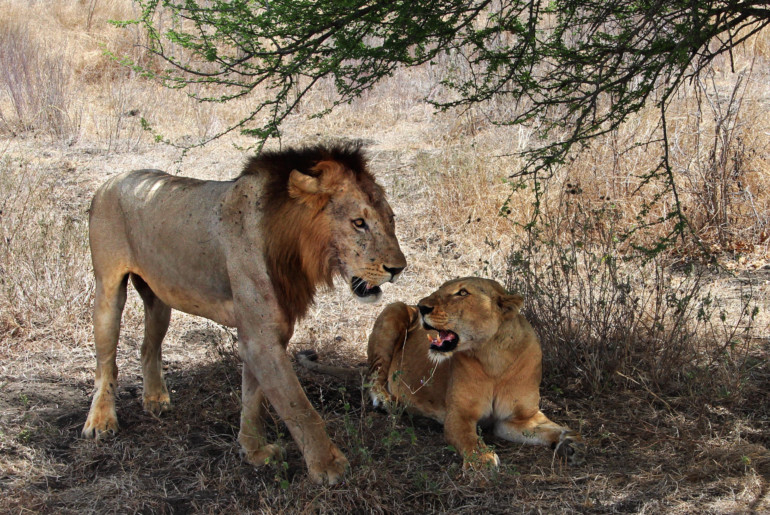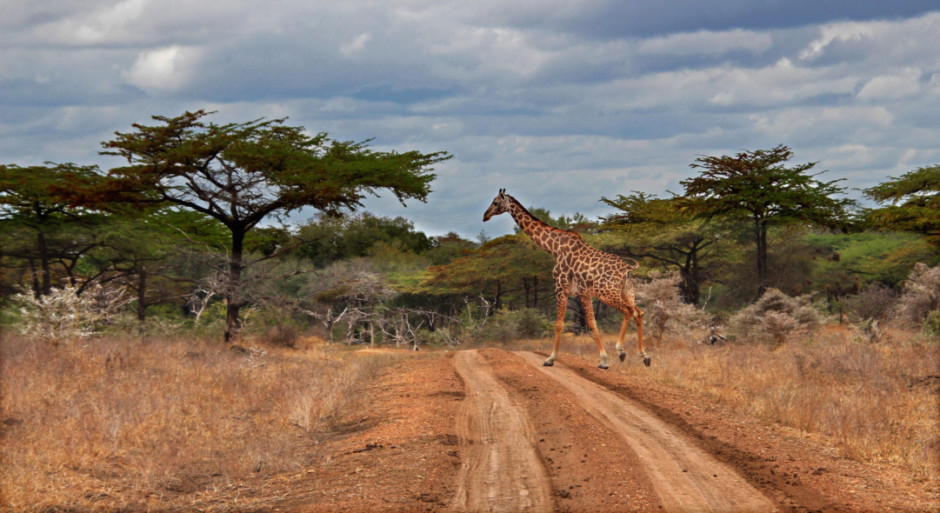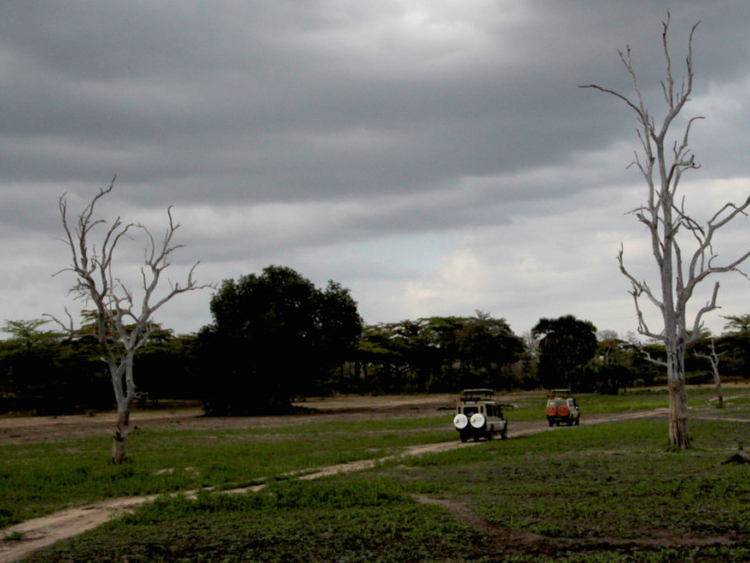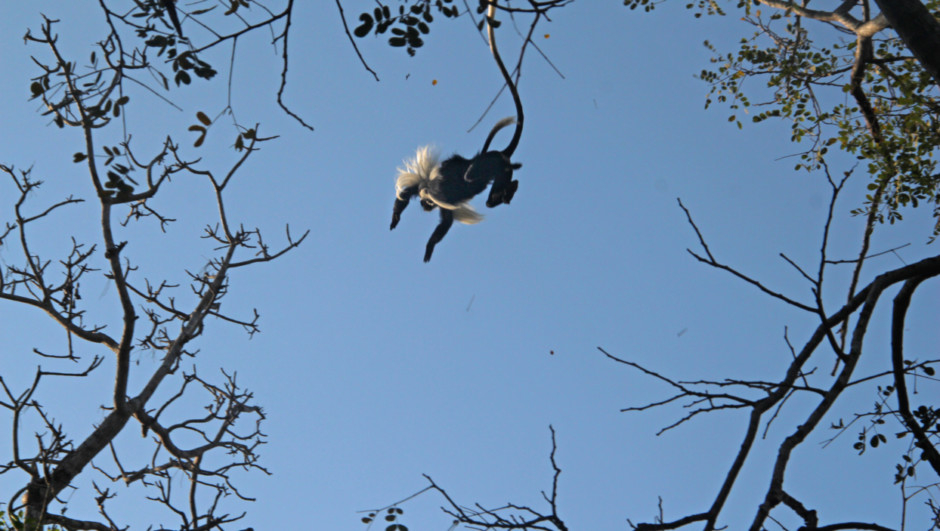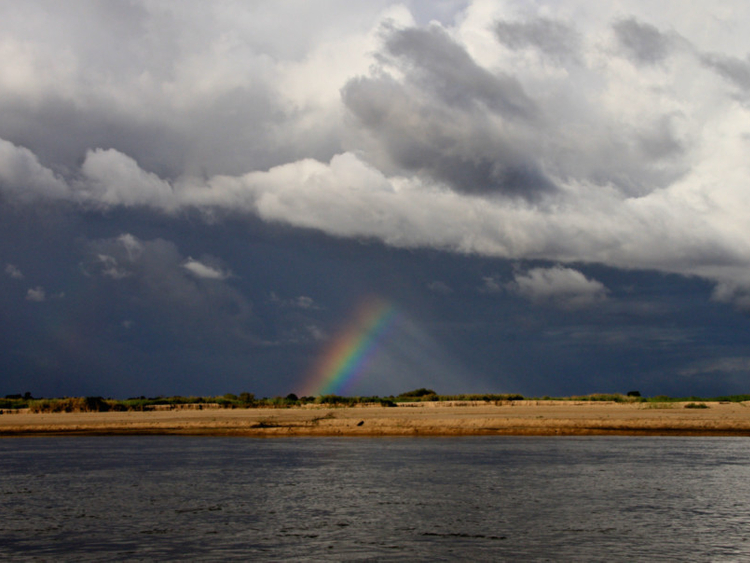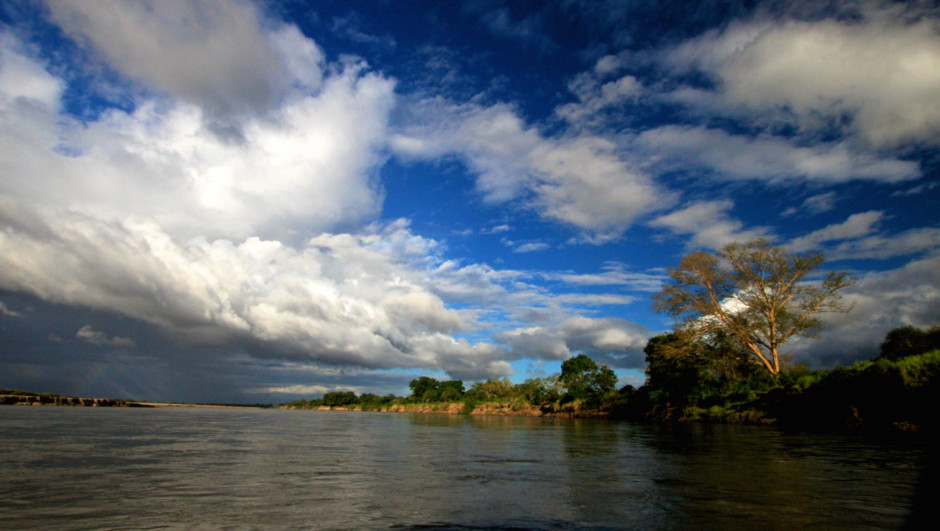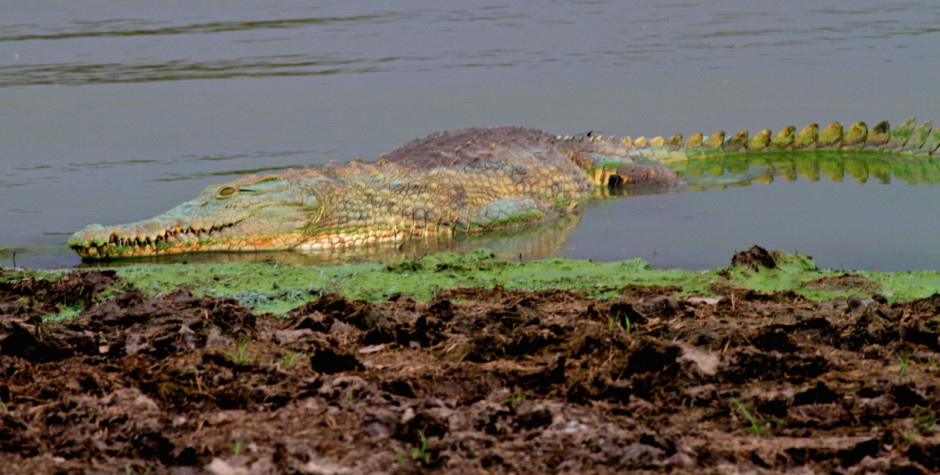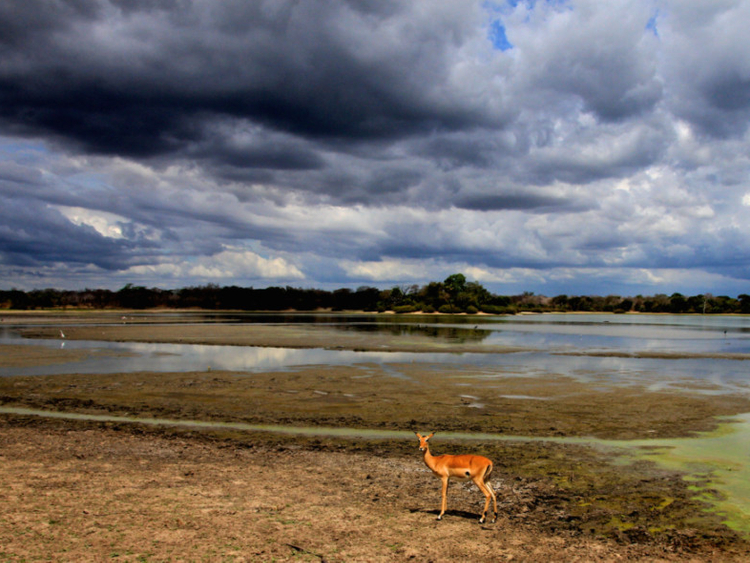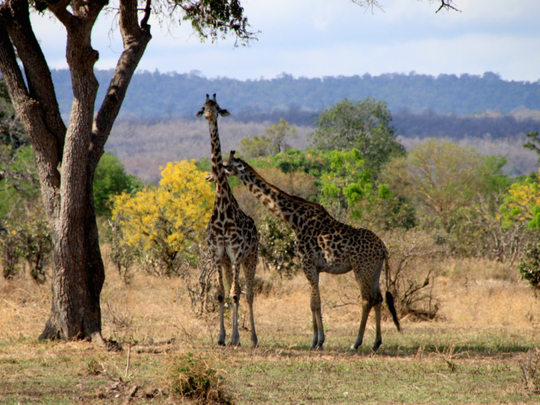
Tahadhari Ukigonga mnyama aina ya Twiga utalipia kiasi cha $15,000.
No, that’s not a typo. It is a cautionary road sign in Swahili on Highway A-7 in Tanzania.
When our guide Ramadan started explaining what it means, I started jotting down his words. I was still writing when our Land Cruiser (modified for the safari) slowed down and stopped in the middle of the highway.
“Zebra crossing,” whispered Ramadan.
I thought that by the time the pedestrians finished crossing the road I would finish writing. But my wife shouted “look, look”.
There in the middle of the road was see a zeal of zebras crossing the A-7, followed by a herd of elephants.
From SUVs to giant 18-wheeler trailers, every single vehicle had come to a stop. This was the reason for those warning signs in Swahili. They said if your car hit a wild animal such as a twiga (giraffe), you would be fined $15,000 (Dh55,093); if an accident killed a punda milia (zebra) the fine would be $12,000; for a chui (leopard) it would be $3,500; for a tembo (elephant) it would be $15,000; and so on.
On our African sojourn this time, we travelled to the giant national parks on the southern circuit of Tanzania — the Mikumi, Ruaha and Selous. These parks are enormous, but the diversity of spectacular landscape and wildlife give each one of them a distinct characteristic.
We started at Dar es Salaam with a very personal touch from the wife of Ahmad Khan, MD of Wilderness Safari (our tour operator). Not only had she prepared a delicious breakfast for us, she packed us a lunch for our six-hour drive to Selous Game Reserve on the banks of Rufiji River — the largest water system in East Africa and bigger than some European countries such as Switzerland.
At around 55,000sq km, Selous is Africa’s largest reserve and a world heritage site. It is three times larger than the famous Serengeti National Park. With its associated wetlands, it is one of the most versatile ecosystems in East Africa. Even though just 10 per cent of the reserve is used for game viewing, you can enjoy some of the most untouched and unspoilt stretches of wilderness on your own without ever bumping in to another safari vehicle the entire day.
The best part of the trip was a boat ride on the Rufiji or on some of the inland lakes. It’s quite an experience when a 1,500kg hippo suddenly pops up from the water a few metres away from your boat or when you catch a glimpse of a resting crocodile suddenly jumping into the water when it notices your presence.
And if you are lucky enough, you can experience a surreal atmosphere on an evening cruise on Rufiji River, with the setting sun playing hide-and-seek with pitch-black African rain clouds.
The next park on our itinerary was Mikumi National Park. Spread over 3,000sq km, it is the fourth largest national park in Tanzania, dissected by the Tanzania-Zambia highway. Frankly, a game drive isn’t needed as you experience plenty of wildlife on either side of the 50km stretch of the highway while you travel in a public bus, truck or private car. It was here that we had witnessed the herd of elephants crossing the road.
The Mikumi National Park is slightly underrated because of its easy access from the highway. It is, in fact, the place for easy sightings of the eland — the world’s largest antelope. Its open savannah will remind you of the famous Serengeti. You can either stay inside the park or just outside along the highway, such as the Angalia Tented Camp (where we stayed) or at the famous Tan-Swiss Lodge.
Our last stop was the Ruaha National Park, named after the great Ruaha River, which is the lifeline of this wilderness. It is one of Tanzania’s best-kept secrets in terms of game viewing, spiced up by the fascinating landscape dotted with baobab trees.
Moreover, it is a rich repository of wildlife, such as wild dogs and several rare species of antelope, not easily seen in other parts of the country. Apart from the largest concentration of elephants, Ruaha is also home to lions and buffaloes.
During the dry days of the peak season, you can see elephants digging the sandy river bed to create holes to access water. Elephants are the ones who are most likely to know sources of water in the dry river bed. Smaller animals such as baboons, zebras and even lions follow them for water. Ponds in the river bed are also important habitats for hippopotamus, fish and crocodile.
In Ruaha you feel being much more in close proximity to wildlife than any of the other parks. One early morning we were woken up at the famous Ruaha River Lodge by the loud roar of a lion. Later, at breakfast, we were informed that the passage next to our tent happened to be the favourite route of a particular pride.
One evening, after a long game drive, we decided to stop at the coffee shop of our lodge atop a rocky hill with spectacular views of the river and the surroundings. As the smiling waiter, Pelade, came to take our order, I noticed a scar on his face and asked him about it. Much to my surprise, he told me the dreadful story of how he was once grabbed by a lion. He screamed but no one heard him as his head was inside the lion’s mouth. He frantically started punching the lion’s mouth as some of his colleagues came to his rescue by making a loud noise to distract the lion, which scared away the beast.
For the following several days the severely injured Pelade had battled for his life in hospital. But, after such a close shave, he said he no longer feared lions. As a souvenir, I asked my wife to take a picture of me with the braveheart.
This is wild Africa and it will always amaze you with a twist at every turn.



